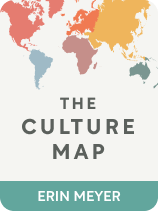

This article is an excerpt from the Shortform book guide to "The Culture Map" by Erin Meyer. Shortform has the world's best summaries and analyses of books you should be reading.
Like this article? Sign up for a free trial here .
Do you manage a team made up of people from different cultures? How do you deal with cultural differences between team members?
If you are a manager of a team represented by people from different cultures, it’s important to anticipate potential clashes that could happen between team members due to cultural differences. In her book The Culture Map, Erin Meyer presents several strategies managers can use when their teams need to work with different cultures or consist of people from different cultures.
In this article, we’ll present the key strategies Meyer recommends when creating and managing cross-cultural teams.
Strategies for Creating Cross-Cultural Teams
Determine whether diversity is necessary.
Managing cross-cultural teams can be tricky because diversity necessarily invites conflict. That’s why Meyer urges you to seriously consider whether a diverse group is necessary for your needs. While diversity is great for collaboration and innovation, a team that needs to deliver a product efficiently may be better with members who understand each other’s cultures easily.
(Shortform note: You might also consider the nature of your project. Cultures differ in their attitudes towards technology and how it should be involved in their environment: Control cultures view technology as a positive tool to control their environment, subjugation cultures are wary of technology and generally prefer their current, natural environment, and harmonization cultures strive for some form of balance between the two. So if you’re working on a project that involves controlling the environment with technology, you might resist hiring diversely.)
Find or become a cultural bridge.
People on your team who have experience working or living multiculturally can help people who are new to working outside their culture—especially if you train them well. Alternately, with the knowledge you’ve learned from this book as well as your own experiences, you too can become a bridge and help your team members gain the understanding necessary to work effectively with cultures.
(Shortform note: Meyer doesn’t specify how to train your cultural bridge. But if they’re multicultural, one place you can start is by having them evaluate where each culture they’re familiar with is on each spectrum, then deciding where their personal views fall. Having a crystal-clear view of which culture influences which aspects of their work personalities will help them identify which aspects to amplify or alter when dealing with each culture.)
Meyer also suggests potentially limiting cross-cultural contact to only the bridges on your team. If you only need to communicate with different cultures occasionally, having just a few people do so reduces the chances of miscommunication.
(Shortform note: Use this strategy with caution. For example, if you’re working with a hierarchical culture, you may offend your foreign business partners by having a lower-ranking bridge communicate with them.In this case, use the bridge as an in-house cultural consultant instead.)
Consider the makeup of your team strategically.
If you control the makeup of your team, try to limit the number of cultures on the team. Fewer cultures means fewer opportunities for clashing. (Shortform note: On the one hand, consider selecting cultures that complement the skills you need on your team. If you need to make many decisions quickly, you might tend towards hiring people who decide individually. On the other hand, remember that there are many benefits of creating a diverse team, and the pros may outweigh the cons.)
That said, be careful of having large groups of the same culture represented on a multicultural team. This can result in cultural cliques and sow discord. Meyer even suggests rotating people through different work locations, if applicable, to avoid cultural cliques. (Shortform note: If you can’t rotate work locations, assigning seats at meetings is a simpler way to enforce physical separation and a commonly recommended method for combating workplace cliques.)
Strategies for Leading Cross-Cultural Teams
Talk about your differences.
According to Meyer, when people understand that their culture influences how they work, they become better at working with people from different cultures. Presumably, this is because it externalizes what others perceive as their faults, so they take criticism less personally and become more open to adapting. To kickstart this conversation, Meyer suggests having a casual team meeting or dinner where you discuss what you’ve learned in this book. You can also ask your team to read a few chapters.
She then recommends asking discussion questions like: How do you think our different cultures affect our teamwork? How can we use our understanding of our differences to improve our teamwork?
For this to be most effective, Meyer recommends grace, humility, and humor. Laugh at your own culture, praise the other, and speak from a place of learning instead of judgment. You want your team members to feel comfortable speaking honestly.
And don’t fret so much if your team doesn’t come to a conclusion. What matters is that you’ve opened the door to this conversation.
| How to Lead High-Stakes Conversations Does the idea of leading such a conversation intimidate you? That’s natural. Conversations about cultural differences are rife with opportunities for disagreement, and they can get extremely emotional if people get defensive. Crucial Conversations suggests several strategies to use during exactly this type of high-stakes emotional conversation. For example, try clarifying exactly why you’re having this conversation at the meeting and why it’s mutually beneficial for all of you. Explaining that it’s not a scolding but an opportunity for mutual collaboration will help your team feel safe and pave the way for a productive conversation—especially if you have people from hierarchical cultures on your team. |
Create the right processes.
Just as organizational culture can sometimes supersede national culture, so too can team culture supersede national culture. (Shortform note: If you feel uncomfortable messaging this to your team, emphasize that no cultural trait is inherently “bad.” It just may not be appropriate to meet your team’s specific needs. We saw this with Korean Air. By switching their in-air language to English, a low-context organizational culture superseded the high-context national culture, and resulted in a drastic improvement in Korean Air’s safety record. While English isn’t inherently better than Korean, it was the more appropriate language for Korean Air’s purpose.)
You can use this to your advantage by creating processes that work with your team.
The best time to try this is when your team first starts working together and before cultural clashes are allowed to simmer underneath the surface. But the second best time is now.
(Shortform note: Atomic Habits explains that habits are triggered by various environmental cues. That may be why it’s best to develop the right processes when you first start working together. If you haven’t had a chance to associate your normal habits with new environmental cues yet, it might be easier to associate new patterns of behavior with those cues.)
Not all cultural differences, it seems, are surmountable with the correct processes. In her chapter on reasoning, for example, Meyer suggests that team members read the relevant chapter of her book and then adapt the best way they can—but she doesn’t specifically discuss developing persuasion processes. Why not? Perhaps because this would involve changing the way you think and logic—a daunting and nearly impossible task.
But when you can, such as with scheduling or decision-making, creating the right processes is a good way to limit the cultural clashes on your team.
Assign tasks based on cultural strengths.
Understanding how your employee’s cultural background influences their work can not only improve how your team works, but it can also be beneficial in other ways. Meyer recommends assigning tasks and projects based on an employee’s cultural strengths. For example, if you have a client who highly values a personal relationship but you consider it a bit of a burden, assigning someone from a personal trust culture to that client may help both your client, yourself, and your employee.
(Shortform note: Meyer doesn’t mention that it’s generally considered unacceptable to make someone do something just because of their cultural background. Consider a compromise instead. Explain the situation to the employee in question, and ask how they’d feel about working with that client. In the situation above, if your employee happens to be introverted, they might opt out. And now you’ve learned more about how your employee’s personal traits interplay with their cultural background.)

———End of Preview———
Like what you just read? Read the rest of the world's best book summary and analysis of Erin Meyer's "The Culture Map" at Shortform .
Here's what you'll find in our full The Culture Map summary :
- The eight axes you can use as a framework to analyze cultural differences
- How to better relate to those of another culture to accomplish business goals
- How the Vikings have more gender equality than we see today






